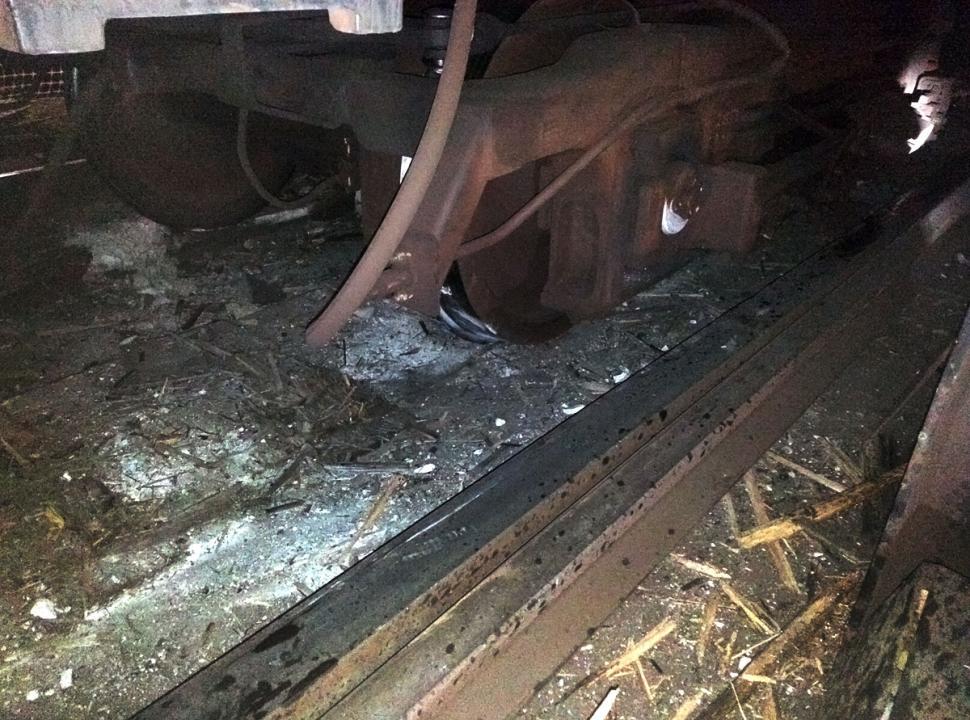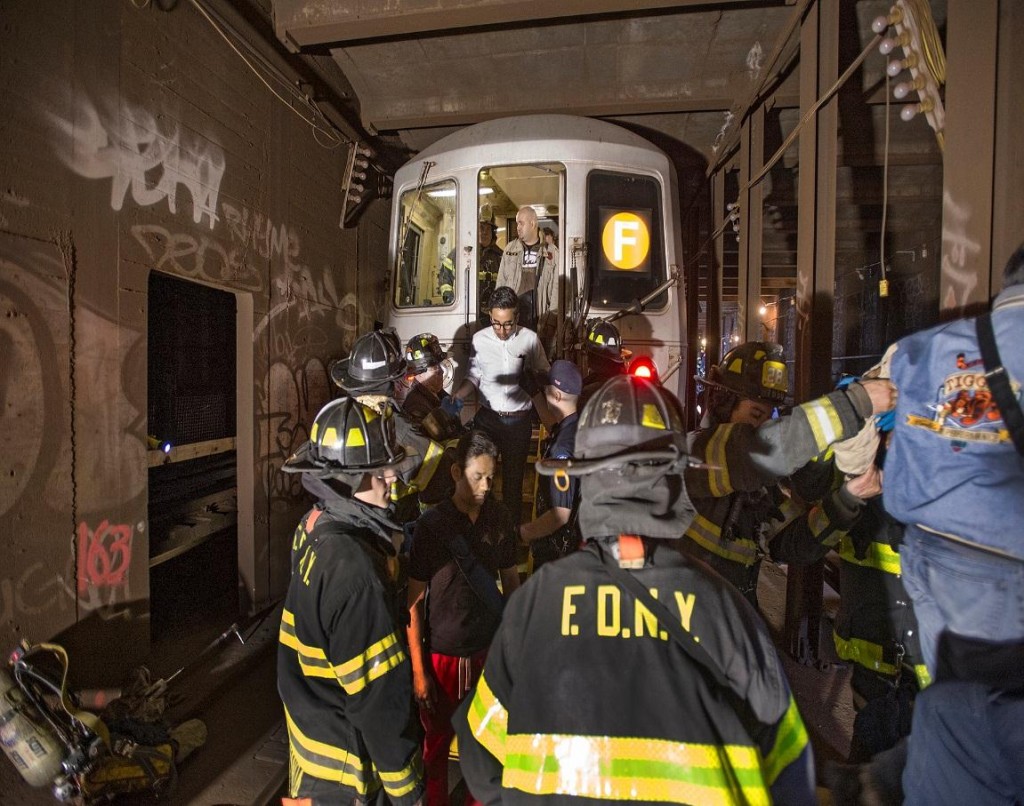An F train went careening off its rails last May, injuring 32 and causing massive subway delays, because of several defects in the tracks that went unreported and unrepaired for at least a year after they were first discovered by an automated inspection, according to a report released Friday by the Metropolitan Transportation Authority.
MTA investigators determined that it was not a single defect in the express track south of the Roosevelt Avenue station, but the combined effect of all those defects in one location that was the likely cause of the derailment.
Disciplinary action is being pursued against three maintenance supervisors and a track inspector for their roles in the derailment — failing to identify, document and correct the defects.
In the wake of the derailment and the ensuing investigation, New York City Transit has changed its inspection protocols to make sure rail defects like the ones found along the F Line are identified and repaired, according to a statement from the transit authority.
While inspectors never reported finding the track defects, despite making repairs to other tracks nearby, an automated inspection system did make a video record of the problems about a year before the derailment.
“Nothing is more important than providing the safest transportation possible for our customers and employees, so determining the cause of this derailment was a top priority for us,” New York City Transit President Carmen Bianco said. “We immediately took corrective action to ensure we always focus on identifying and correcting track defects. This will minimize the risk of future derailments.”
The Manhattan-bound F train was carrying about 1,000 passengers as it hurtled down the express tracks under Broadway at 60th Street in Woodside on May 2, when an 8-foot-long section of the 19-foot, six-inch rail fractured beneath it. Six of the train’s eight cars derailed. Thirty straphangers and two train crew members suffered minor injuries in the crash that caused an estimated $2 million in damages.
The weekday wreck at 10 a.m. forced the MTA to cancel service along the line and caused massive delays that rippled throughout the subway system.
During the investigation, safety officials reviewed videos from previously conducted automated inspections of that same stretch of track. The videos showed multiple problems, including a metal plate and fasteners under the track that had been broken for at least a year before the derailment. A wooden tie under the metal plate also was in poor condition.
The report also noted that two rails were not fitted together properly, leaving one eighth of an inch higher than the rail it was joined to. Metal rails used to join the rails together had been reused and one of six bolts holding them in place was missing. All of the defects were found in an area where crews had earlier replaced two sections of broken track, without investigating why the track was in disrepair.
“The combination of the broken plate, broken fasteners and deteriorated tie should have been prioritized for repairs,” read a statement from the MTA. “The report concludes that Division of Track personnel did not identify, document and correct the track defect at that location, either during regular inspections or when the two prior broken rails were replaced. They also did not adequately investigate the underlying causes of the broken rails.”
The MTA said it has taken other steps to make sure rail defects are properly identified and repaired, including a new procedure that is intended to ensure that plates and fasteners are replaced as soon as possible. The transit agency will add eight maintenance supervisors and will increase the number of times supervisors examine subway lines with the highest number of broken rails that are now inspected monthly by ultrasonic inspection cars.
The Transit Authority spends about $180 million on track maintenance every year. Altogether, the MTA has pumped $1.5 billion into track rehabilitation and construction under its 2010-2014 capital budget.
RECOMMENDED STORIES

































